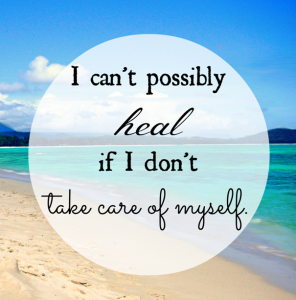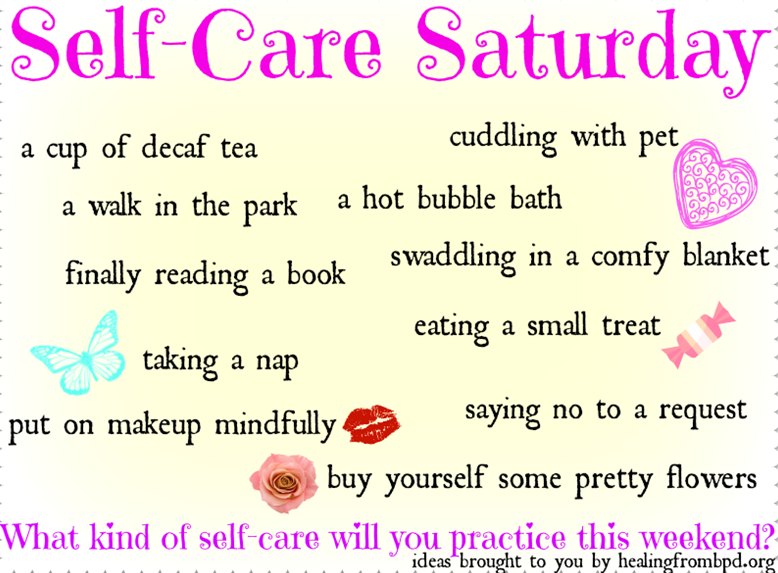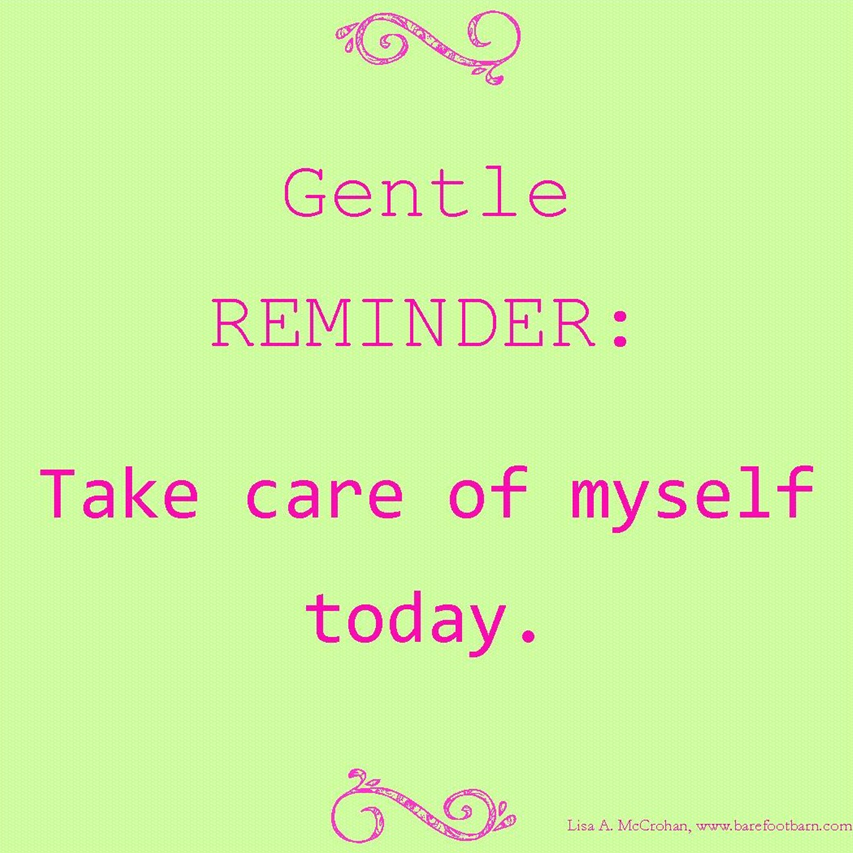 Nurturing and caring for yourself is a challenging yet essential part of recovery. It is not selfish or frivolous to take time to meet your own needs or wants or to self-soothe, nurture, and care for yourself. In fact, it shows great strength and maturity and contributes to your overall physical, emotional, and mental health. When you are well-rested, nurtured and restored, you have more to offer those around you too – it is the gift that keeps on giving.
Nurturing and caring for yourself is a challenging yet essential part of recovery. It is not selfish or frivolous to take time to meet your own needs or wants or to self-soothe, nurture, and care for yourself. In fact, it shows great strength and maturity and contributes to your overall physical, emotional, and mental health. When you are well-rested, nurtured and restored, you have more to offer those around you too – it is the gift that keeps on giving.
Identifying my needs and discovering ways to meet those needs was an incredibly challenging process. As part of a group therapy session during one of my hospital admissions, we each created a ‘Coping Box’. We collectively compiled a list of coping strategies, ideas for self-care and nurture, and self-soothing, and wrote these on strips of paper which were then rolled up and placed in the box we had made. When faced with a challenging situation or needing to take some time out, I would pull out some of these strips and sift through the various ideas until I found one that I could carry out. Below is a list of some of the ideas that I and others have come up with. I encourage you to add to or create your own list which can support your recovery. If you have more ideas that you would like to submit and include on this website, simply email them through. Please ensure you have read the guidelines for submission.
Visually
- Take a walk and observe the nature around me
- Visit an art gallery, museum, zoo, aquarium, or another place that is visually stimulating
- Imagine I am a tree trunk and I have roots extending through my feet into the earth, imagining I can draw stability and energy from the earth
- Purchase or pick a flower and display it in a prominent area
- Sit in the garden
- Imagine blowing my concerns into a paper bag to be reopened when feeling safe
- Visualise a safe place
- Watch the trees in the wind
- Visualise a wise mentor and any messages they might have to help me
- Light a candle and watch the flame
- Google images of beautiful scenery (beaches, rainforest, lakes)
- Watch a movie appropriate to my mood
- Make an inspiration or dream board
- Redecorate my space
- Find quotes that are the most helpful/inspirational to me and put them in places I’ll see them
- Change the lighting in my home/room (sometimes just covering a lampshade in a sheer coloured fabric is enough) – this can make a huge impact on mood.
Smell/Aroma
 Notice all the different smells around me – smells of nature, or food cooking, etc
Notice all the different smells around me – smells of nature, or food cooking, etc- Burn a scented candle or incense
- Get some fresh air
- Pick some fresh flowers or herbs for my home
- Fry onions and garlic up
- Dilute some essential oils with water and put into a spray bottle for my bed sheets or pillow
- Sit in a local coffee shop
- Buy some fancy scented soap or lotion and apply liberally
Auditory
- Listen to beautiful or soothing music, sounds of nature, or relaxation music
- Sit by a waterfall
- Recite positive messages and mantras
- Sing at the top of my lungs to my favourite song
- Go to the beach, watch and listen as the waves crash into the shore
- Play an instrument
Taste
- Enjoy a tasty treat, eating slowly and mindfully
- Enjoy a soothing drink such as a herbal tea or hot chocolate
- Try a new recipe or cook something familiar and comforting
- Eat juicy fresh fruit
- Visit a new restaurant or select something off the menu of my favourite place that I’ve never tried
Touch/Tactile/Kinaesthetic
 Hold onto the sides of my chair and push down into it
Hold onto the sides of my chair and push down into it- Concentrate on feeling my feet on the floor
- Take a bubble bath or a long shower
- Snuggle up to my pet
- Scribble really hard and tear paper to pieces
- Paint or draw left-handed
- Feel the texture of my clothing
- Tense then release muscles
- Stretch
- Shake out tensions
- Make lots of noise – stamp my feet, yell, scream
- Get a massage
- Participate in yoga or other forms of exercise
- Punch my pillow or throw ice cubes at concrete
- Gardening
- Go for a walk or jog
- Collect samples of textures that I find soothing and fill a little box with them
- Cuddle my teddy bear or pillow or a person
- Go out in the grass with bare feet or to the beach and feel the sand between my toes
- Finger paint
Other Activities
- Journal
- Take a nap
- Read a book
- Have a good cry
 Silent Screams
Silent Screams- Work on a jigsaw puzzle
- Go for a drive
- Plan something
- Set some goals
- Wash my face
- Have a glass of water
- Deep breathing
- Paint my nails
- Pray
- Read the Bible
- Slow my breathing rate
- Wash and blow-dry or straighten my hair
- Have a manicure or pedicure
- Text, call or meet up with a trusted friend or support person
- Meditation and awareness of breathing
- Write a poem, song, or do something else creative
- Read some quotes from my Inspo Box or some recovery stories
- Do some puzzles (Sudoku, Rubik’s Cube, Crossword, etc)
- Utilise some of the Coping Strategies for dealing with Intrusive and Distressing Images, Thoughts or Unpleasant Feelings
- Dance
- Write myself a letter (to my future self, past self, or for times of distress)
- Write someone else a letter
- Write down a list of things I like about myself and/or things I’m good at
- Practice daily affirmations
- Sit or lie in the park with a book or my imagination
- Watch clouds or animals or other people
- Blow bubbles or fly a kite
- Go to a park with swings and swing
- Tend to a garden or start one
Learn a new skill or a new languageWatch a funny TV show or movieMake funny faces at myself in the mirrorMake travel plansKnit, sew, embroider, cross stitch, draw, paint, take photos, weave, collage, build something, etc
Some ideas derived from Linehan, MM 1993, Skills training manual for treating Borderline Personality Disorder, The Guilford Press, New York, USA.